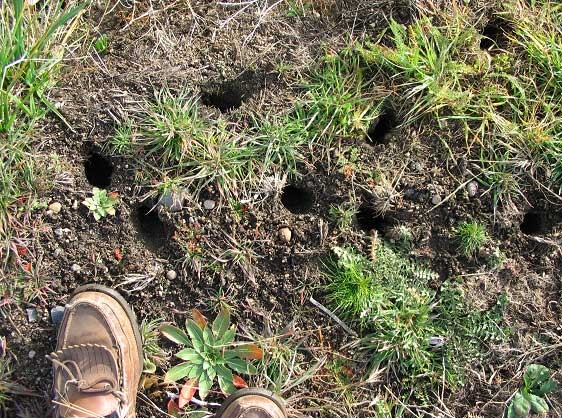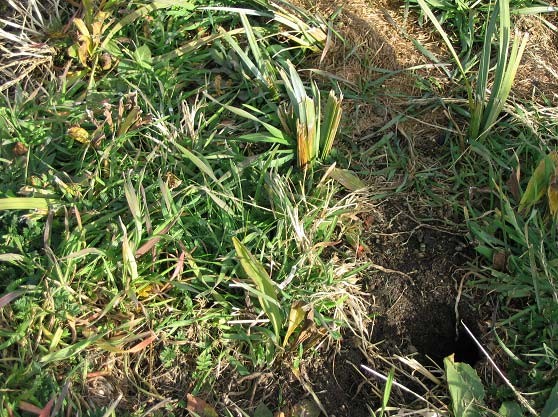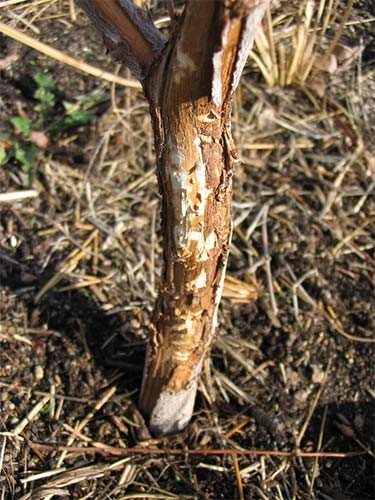Mountain vole / Microtus montanus
Area of Distribution: The montane vole is found primarily in mountainous regions of the western US. It is found in dry grasslands, alpine meadows, and sagebrush grasslands. The montane vole inhabits gardens and landscaped areas in northern Nevada, the western half of Colorado from 6000 feet to above timberline, in northeastern California and the eastern Sierra slope and the mountain meadows of eastern Oregon. When it is associated with the meadow vole it is generally in the drier habitats.
Mostly above ground foraging Montane Vole populations can be controlled with the Vole Control Bait Station System in the Tent Set-up Method and if there are signs of activity in planting beds, the Mulch Covered Method can be used in these areas.
 Montane Vole Montane Vole |
 Distribution of the Montane Vole Distribution of the Montane Vole |
| Pictures from - National Museum of Natural History ©2004 Smithsonian Institution | |
Physical characteristics: The montane vole is 5 ½ to 8 ½ inches in length. Its fur is brown, washed with gray or yellow, and mixed with some black-tipped hairs. Its feet are usually silver-gray and the fur under its body is whitish. The tail is bicolor.
Reproduction: Montane voles make a nest of dried grasses that is constructed in a burrow excavated in moist soil. When the vegetation is green and succulent, reproduction is stimulated, whereas when the vegetation is dry and mature, reproduction is inhibited. Mating can occur year round, but is probably restricted to March - November at the higher elevations. Mated pairs of montane voles do not share a nest. The male montane vole is promiscuous. The gestation is 21 days and litter sizes are usually 5-6. The young wean at about 3 weeks, and the females are sexually mature soon after weaning. When the populations are low in an area, females abandon the nest and young after weaning. When populations are high, extended maternal families are formed in which a female may stay in the nest for 2 successive litters. So when you see a cluster of burrow openings, it is necessary to do the Apple Sign Test to confirm that this is an active area before you place a bait station there.
Ecology: Montane voles spend most of their lives above the ground, but can also make shallow tunnels in the ground. They are active year round and are active mostly at night but may also be active during the day. They prefer runways in open grass but stay and hide where there is a protective cover from predators such as hawks. Montane voles prefer meadows or grasslands that have a water source. Their home ranges average about a quarter of an acre, or 10,000 sq. ft. The Tent setup with the Vole Control Bait Station is most effective in controlling voles in the open grassy areas, because they feel safe from predators while they eat the bait. Occasionally, Montane voles may have tunnels under the mulch in your landscaped areas, if so, use the Mulch Covered Method setup of the bait stations to gain control in these areas.
Signs of Montane Vole Activity: look for clipped runways in the grass, piles of clipped grass stems without the seed heads.
 Picture provided by B. Guddat from Nevada Picture provided by B. Guddat from Nevada |
 provided by B. Guddat from Nevada provided by B. Guddat from Nevada Notice the entrance hole at the lower right, and the clipped grass along its runway. |
When snow cover is present, voles are protected from predators and their activity can go undetected until it is too late. They can damage the trunks and roots of trees by gnawing. The gnaw marks are about 1/16 to 1/8 inch wide and 3/8 inch long found in irregular patches and at various angles. If this gnawing completely surrounds the root or trunk of the tree or shrub, it will kill the plant. This is called girdling.
It is important to act before vole numbers get too high, especially before winter snow provides cover. The damage they can do to ornamental plants, trees, and garden plants can be quite severe and take several years to replace.
With their high reproductive potential, any remaining voles could repopulate an area quickly. With this potential for severe damage to your landscape and garden, a homeowner cannot afford to do nothing and assume a predator will control the problem. You must take immediate action to prevent the loss of valuable plantings. Effective action involves using the Vole Control Bait Station System, habitat modification, and regular monitoring in the fall and spring with the Apple Sign Test to detect any resurgence from surrounding areas. Pay particular attention to surrounding areas of your property that have heavy vegetation because such areas are likely sources of invasions.
